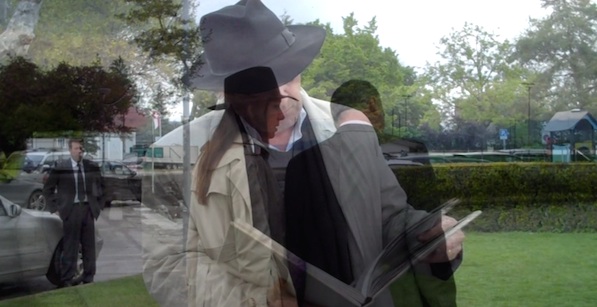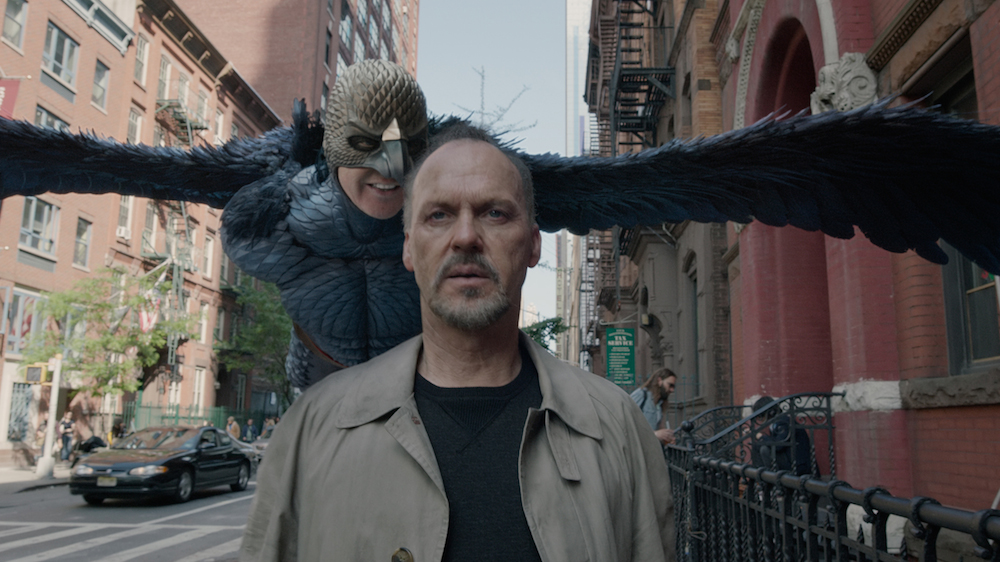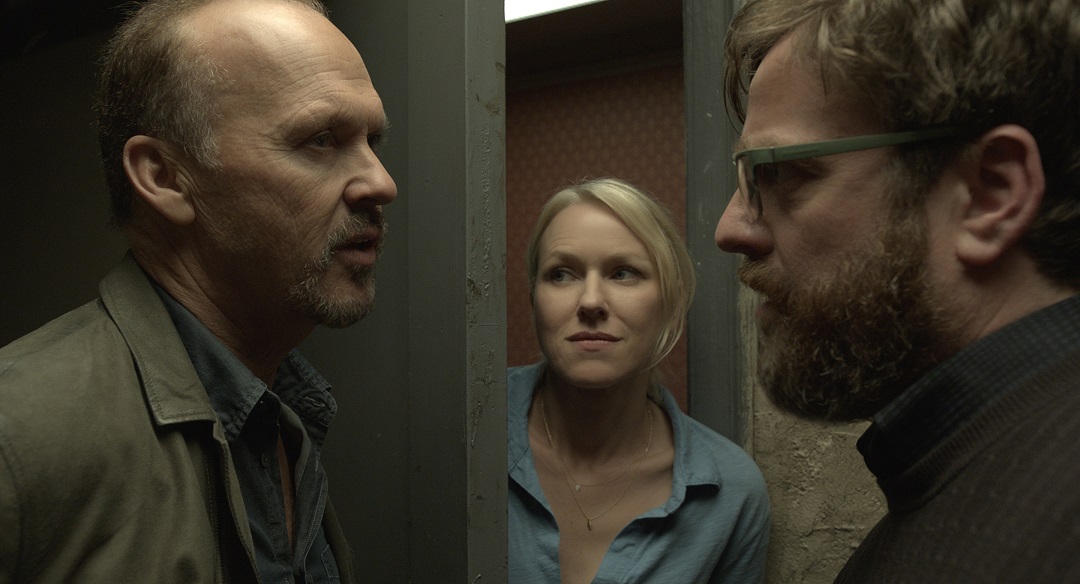
1.
A leitmotif has been cycling through the art film recently: an art panic. “Art film” is such a nebulous marketing term that it’s helpful, first, to clarify what kind of movie it is that we’re discussing. An art film, presently, is any picture that isn’t pitched at audiences as a blockbuster. While the phrase often carries oblique or experimental connotations, there are plenty of traditional movies nowadays that are deemed fringe for reasons that appear to pertain to their inability to gross 400 million dollars domestically, which is to say that an art film is a movie that isn’t made for children. There’s nothing oblique or experimental about The Immigrant, for instance, a classic three-act melodrama that was essentially unreleased theatrically. There’s nothing formally challenging about Land Ho! either, a poignant aging buddy dramedy that might’ve found an appreciative and sizable audience had it been allowed to. But these pictures aren’t Marvel films, and they aren’t The Hunger Games, so they’re now “art films.”
This definition of the art film indicates the nature of the art panic: these productions are growing understandably weary of their approaching irrelevancy. There’s a weird twinned irony to this: because of streaming technology, and not only the cheapness, but the sheer, terrifying, ubiquity of cameras, there are more films than ever, and, logically, there are more good films, and a person only moderately acquainted with the baubles of 21st century culture can see many of them with ease. But this is niche viewing, which has a certain poetry to it, as the film has been inadvertently restored to a realm of obsessive, privatized art by the corporate practices that have bullied all the competition out of the theaters in actions that superficially appear to endanger film’s integrity as a democratic art, as well as its capacity for invention and enjoyment.
Movies, after all, were born as an almost private sideshow. The thrill-rides that now comprise ninety-something percent of the general public’s movie consumption have taken ownership of the sideshow element while the art films have forcibly seized the privacy. Corporations own the lawn, but there are these glorious mushrooms sprouting up too fast to properly control. But what comfort is this poetry to an artist who wants to command pop culture’s attention without directing an Iron Man movie? What comfort is it to the artist who wants to make the next Apocalypse Now, an “art film” that’s mounted on a defiantly un-arty scale?
To be seen and heard over the noise of endless images created by an endless series of devices, bigger, louder films, TV shows, Twitter, Facebook, Instagram and the 300 phone apps that were invented as this was written, that’s the source of the art panic. The year 2014 saw the release of a variety of art films (as defined above) that worked in an explicitly or implicitly meta acknowledgement of the potential futility of their makers’ quest to get their films to matter, including films Keyframe writers have lauded, such as Listen Up Philip, National Gallery, 24 Exposures, A Spell to Ward Off the Darkness, The Vanquishing of the Witch Baba Yaga, The Zero Theorem, and The Congress, to name a few. But there was no film this year more self-consciously stricken with its own potential irrelevancy than Birdman (or the Unexpected Virtue of Ignorance).

2.
It’s all stated right there, intentionally obvious and obnoxious, in that subtitle. In structure, this is a trials-of-the-beleaguered-artist backstage farce, following a theater director (Michael Keaton), as he attempts to stage a Raymond Carver adaptation so as to atone for his prior career as the star of a hugely profitable series of superhero films. But atonement is a self-delusion, as the film just barely recognizes. Because the Keaton character, who’s obviously a representation of what people might’ve believed happened to the actor himself after he walked out on Batman 3, assuming they’ve given it any thought, is obviously attempting to trade in the “tortured artist” bit so as to cynically restart his career. We know the film knows this because almost every character who isn’t Michael Keaton is allowed to tell him this, at great length and repetition. A story explaining Keaton’s attachment to Carver is, to give the film the benefit of the doubt, purposefully absurd and “inspirational.”
All of the supporting characters are clichés (chummy lawyer/agent/old friend, shrill, sexy, desperate actresses, egocentrically macho method actor, drug-addled child of privilege, pretentious old-guard critic, and so forth), and your empathy is never directed toward anyone other than Keaton, who’s also a cliché. But Keaton doesn’t ultimately merit much empathy either, because he’s less of a stand-in for the real Keaton than for director Alejandro González Iñárritu, who stages a series of self-pitying rants as a funeral pyre of mourning for the world’s cultural death rattle. It obviously upsets Iñárritu a great deal that his films are under-attended, while Marvel (which is explicitly name-checked several times) can reliably release three identical mega-blockbusters a year to an audience of grateful nitwits. That’s where the subtitle, which is also literalized by a critic’s backhanded compliment, comes in: ignorance is blissful in this buzz-happy, Twitter-fried culture that knows nothing else. The real men (and only men) of thought, talent and circumstance, like Iñárritu and Keaton, are tortured by the knowledge of what’s missing: soul, individuality, and everything else that consumerism’s reliably snuffing out with ever-increasing efficiency.

Give Iñárritu this: He doesn’t beat around the bush, but he remains, as he has since 21 Grams, a huckster, a William Castle for the art-misery crowd, though with none of Castle’s cheekiness. Hypocrisy creeps into the film’s sense of indignant outrage almost immediately. Iñárritu isn’t concerned with culture’s devolution but simply his perception of his inability to wrangle culture’s attention. The filmmaker doesn’t acknowledge the blossoming democracy of social media (predictably demonized in scenes that are as reactionary as any sentiment uttered by the villainous critic), which allows folks too poor to see theater the ability to see and share art that was previously unavailable to them. It doesn’t occur to Iñárritu that the folks flocking to Marvel movies would never see his own films anyway, or that his fictional Keaton’s art is terrible, as mannered, and as false, as encouraging of conformity, in its way, as Marvel’s films. If Birdman exhibited any sense of humor about its self-absorption (as Listen Up Philip does), it would show that “art” and “pop” films play the same essential game of audience-flattery, only with a few variables mixed around.
Iñárritu probably intends most of the aforementioned takeaway; like Kevin Smith, he’s endlessly seeking to critic-proof himself. Birdman could be charitably taken as a parody of artistic hypocrisy, and it has been described, inexplicably, as a comedy, but the filmmaker doesn’t have a knack for punchlines, as he’s the kind of jokester who keeps nudging you, asking you if you “get it.” There are two big formal gimmicks in this film: one is thoroughly awful, the other is brilliant in theory but unable to breathe among the surrounding hysteria.

The awful notion is the pretense that the entire film is staged in a single post-production-enabled tracking shot, which encourages the camera to move close-in on the actors’ over-acting, fostering the illusion that they are screaming directly into the audience’s face for the entirety of the film’s two hours. You aren’t allowed to find anything for yourself in Birdman; there’s no mystery, no nuance, only numbing, ostentatious repetition of “showmanship,” a tendency that likens the film to the summer behemoths it hates, and shoves every point to the foreground of the screen. And there’s only one point: Iñárritu’s saintliness versus the world’s corruption and ingratitude for said saintliness. The film puts you in the uncomfortable position of resenting a pro-“culture” message to which you’re probably, if you’re bothering to read this, largely sympathetic. Iñárritu paints himself into a corner as his own ultimate cliché: the reactionary blue-blood disconnected from all reality.
Birdman’s failure stings because Iñárritu is a showman—the film’s a memorable disaster, which is admittedly its own kind of achievement. His other formal inspiration, the source of the picture’s modest pleasures, is to stage sequences in a seemingly tossed-off manner that emphasizes the contrast between the otherworldliness of the major effects, such as of human flight or of the existence of a giant mechanized bird, and the everyday shabbiness of city street life. A camera will casually pan over, for instance, to an image of a man levitating in his dressing room. The special effects appear special because they aren’t overtly visible all the time, which exists as a marked contrast from an Avengers or Transformers movie that abounds in eye-tickling fanciness that’s been accepted by pop culture as a given. This ambition connects Iñárritu explicitly to Michel Gondry, who has been fighting his own battles to invigorate films with awe and also, this year, to Jean-Luc Godard. At its simplest, Godard’s big film of last year, Goodbye to Language, is also concerned with rendering special effects special again, or, less simply, with restoring evocative, primal power to the filmed image.

Goodbye to Language abounds in philosophic/aesthetic quotations; the references fly fast and loose, deliberately suggesting a particularly erudite session of channel surfing that will be familiar to the director’s admirers. An attractive young woman and an older man, both wearing fedoras that serve to put their sequences in highly fragile meta quotation marks (Godard emphasizes their performances as play-acting) refer to Hitler, connecting his rise to power in Germany with the invention of the television (both occurred in 1933). That sentiment haunts the film. Images, sound bites, skits, references to books, paintings, and films, particularly Godard’s own, rush the screen and regroup, within the viewer’s mind, into something that’s intuitively coherent.
The older man says “that what they call images are becoming the murder of the present,” which fuses with the Hitler/TV factoid to reasonably suggest that all culture, not just pop, functions as a means of casual enslavement that also serves as distancing agent from the immediacy of life. The vague B-movie scenario that seems to cast a pall over the young woman and older man even appears to embody a fictional illustration of society as an all-seeing oppressor (shades of Alphaville, which also probably influenced The Congress), and these thematic dominos all affirm the title, which yearns for a restoration of instinct, or even freshness, in art as a proxy for man.

This could be impossibly intellectual if Goodbye to Language didn’t abound in that year’s most astonishing and surprising images. A knowledge of Godard’s work helps with the inside-baseball references, most certainly, but the immediacy of the film’s aesthetic will certainly impress others outside of his cult; it’s not facetious or cheeky to suggest that this is the artist’s most accessible work since Every Man for Himself. Godard shoots with a wide range of cameras (listed in the credits at the end), fashioning moving pictures that emphasize beauty created on the run for pennies; he’s spinning our obsession with documenting every element of our lives, rendering ourselves the stars of our lives with technology that ironically serves to divorce us from them, into art.
Godard is manufacturing his own transcendence, and offering it up, somehow without ego, as a solution for evolution of appreciative discourse. The brilliance of Godard’s images resides in their appearance of casualness: many of these sequences are grainy, and the filmmaker often allows the camera to amateurishly doodle around in the manner of a video captured on a phone. In the middle of such a sequence, though, will be a picture that reminds you of his formal mastery: a night-vision shot of the sky with rich cool colors that suggest Van Gogh’s “Starry Night,” a street scene so tactile that you can make out pebbles or the lights reflecting on the water in the street’s cracks; colors reliably so intense and so vibrant as to earn the film’s namedrop of Monet.

Two images are unforgettable. The first involves the young woman and older man: the woman is pulled away from a bench, toward the right of the frame, while the man looks on from the left. The camera pans right to follow the woman, while a dissolve blends the image of the older man on the left with the image of the woman as she’s heckled by mysterious agents on the right, allowing the viewer to see everyone at the same time. On the surface, this shot is a joke; a utilization of the film’s 3D experimentation that’s so blatant and contrived it will register as such even to viewers watching the film in a 2D format. But it’s also a beautiful image; an exhilarating fusion of planes that suggests the full well of understanding that’s beyond the older man’s reach. The man can play the role of intellectual, but when something happens, he’s adrift, distant. The second image conveys distance by ironic proximity: another man sexually advances on his resistant significant other in a shower in an action that’s framed by the glass of the shower’s door, which, itself, is framed by a mirror in the bathroom, which, itself, is framed by the purposefully-attention-grabbing cant of Godard’s camera.
Like Iñárritu, Godard evinces distrust of the proliferation of mediated stimuli, unlike Iñárritu, he nevertheless revels in the democracy of new, portably created, instantly rendered images, fashioning a work of art that opens viewers up to the beauty all around them, not through platitude, but by proof via the formal pudding. Goodbye to Language is hard to shake, and so surprising because it appears that Godard opened himself up to surprises: this picture plays as an anti-medium rant that spontaneously saw the light of new media. Birdman and Goodbye to Language embody the polar dualities of the art panic: total self-absorption versus an ultimate triumph of cynicism. They were the meta movies of the year, the latter of which I watched, full confession, on a laptop, devoid of a capacity for capturing the film’s third dimension. The necessity of this compromise, born of the film’s pronounced rarity, only confirms and intensifies its despair, which it has the invention and brazenness to ultimately trump.



